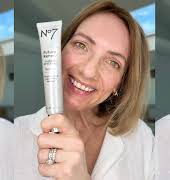By Grace McGettigan
29th May 2018
29th May 2018
Fats are a common part of everyone’s diet. While many of us categorise them into two groups; saturated and unsaturated; there’s a third type of fat causing some confusion. Enter trans fat.
While trans fats occur naturally in small amounts of some of our food (such as dairy and beef), they can also be artificially made and added to foods as a preservative. They’re often added to packaged foods such as crackers, biscuits and soup powders; as well as some butters and margarines which are then used to make baked goods.
Trans fats are made during a process called hydrogenation; where hydrogen is added to vegetable fat. This leads to a chemical change, making the once-unsaturated fat partially saturated. While this extends the food’s shelf life, it also makes it less healthy to consume. Trans fats are believed to be a bigger threat to heart health than saturated fats alone. The Food Safety Authority of Ireland says, “Trans fats lead to increased levels of harmful cholesterol and triglycerides in the blood. In these respects, trans fat could be considered as more likely to promote heart disease than an equivalent level of saturated fat.”
The World Health Organisation estimates more than 500,000 deaths from cardiovascular disease worldwide are caused by trans fat intake. Some countries have already put legal bans and limits on the amount of trans fats that can be sold. Denmark was the first country to implement such restrictions. The Danish Nutrition Council found margarine was the main source of trans fat for individual and consumer use; followed by packaged snacks, bakery goods and confectionary items. “Microwave popcorn was in a league of its own,” reports the WHO. “Up to 40% of the fat content in [microwave popcorn] came from trans fats (an alarming figure given 30 million bags of microwave popcorn were consumed annually in Denmark).” Since the ban on industrially-produced trans fats was introduced, deaths by cardiovascular disease have declined significantly. The USA followed suit in 2015.
Based on Denmark’s results, the WHO launched a campaign called Replace – a guide to eliminating trans fat from the global food supply by 2023. If successful, they say it could save more than 10 million lives worldwide by reducing cardiovascular disease.
No such ban exists in Ireland yet, but you can cut down on your trans fat intake by checking the ingredients on your food labels. The FSAI says, “If ‘partially hydrogenated’ oil or ‘hydrogenated’ oil is listed in the ingredients, this may suggest the presence of trans fatty acids. Also, ingredients are listed in decreasing amount; therefore trans fat levels are likely to be higher in a product where hydrogenated oil is listed as the first ingredient than a product where it is listed as the last ingredient.”
Photo: Charles Etoroma, Unsplash























